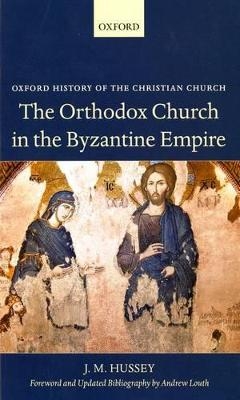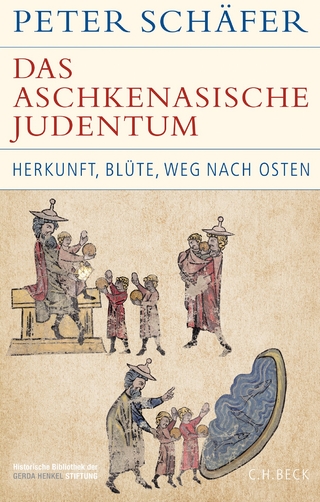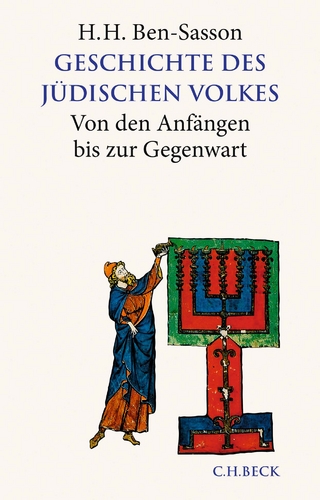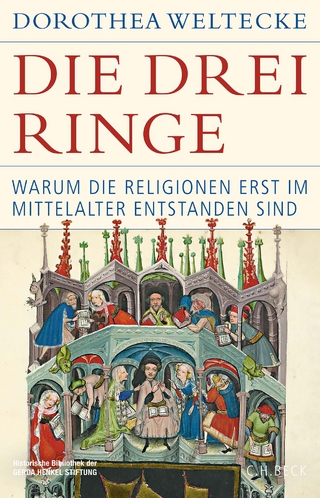
The Orthodox Church in the Byzantine Empire
Seiten
2010
Oxford University Press (Verlag)
978-0-19-958276-1 (ISBN)
Oxford University Press (Verlag)
978-0-19-958276-1 (ISBN)
- Titel ist leider vergriffen;
keine Neuauflage - Artikel merken
The widely acclaimed comprehensive survey of the role of the medieval Orthodox Church in the Byzantine Empire (c.600-c.1453), by the late Professor J. M. Hussey. Discusses landmark events in ecclesiastical affairs, the influence of the Church on the West, its officials and organization, and the spirituality of laity, monks, and clergy.
This book describes the role of the medieval Orthodox Church in the Byzantine Empire (c.600-c.1453). As an integral part of its policy it was (as in western Christianity) closely linked with many aspects of everyday life both official and otherwise. It was a formative period for Orthodoxy. It had to face doctrinal problems and heresies; at the same time it experienced the continuity and deepening of its liturgical life. While holding fast to the traditions of the fathers and the councils, it saw certain developments in doctrine and liturgy as also in administration.
Part I discusses the landmarks in ecclesiastical affairs within the Empire as well as the creative influence exercised on the Slavs and the increasing contacts with westerners particularly after 1204. Part II gives a brief account of the structure of the medieval Orthodox Church, its officials and organization, and the spirituality of laity, monks, and clergy.
This book describes the role of the medieval Orthodox Church in the Byzantine Empire (c.600-c.1453). As an integral part of its policy it was (as in western Christianity) closely linked with many aspects of everyday life both official and otherwise. It was a formative period for Orthodoxy. It had to face doctrinal problems and heresies; at the same time it experienced the continuity and deepening of its liturgical life. While holding fast to the traditions of the fathers and the councils, it saw certain developments in doctrine and liturgy as also in administration.
Part I discusses the landmarks in ecclesiastical affairs within the Empire as well as the creative influence exercised on the Slavs and the increasing contacts with westerners particularly after 1204. Part II gives a brief account of the structure of the medieval Orthodox Church, its officials and organization, and the spirituality of laity, monks, and clergy.
Foreword ; I:CHALLENGE AND RESPONSE WITHIN THE HISTORICAL FRAMEWORK ; 1. The Christological Problem in the Early Middle Ages ; 2. The Iconoclast Controversy 726-843 ; 3. The Age of Photius 843-886 ; 4. Leo VI's Dilemma: Nicholas Mysticus and Euthymius 886-925 ; 5. The Patriarchate (925-1025): The Predominance of Constantinople ; 6. Increasing Pressures on Constantinople and the Widening Gap 1025-1204 ; 7. The Effects of the Fourth Crusade 1204-1261 ; 8. Contacts: Failure and Achievement 1258-1453 ; II: ORGANIZATION AND LIFE OF THE ORTHODOX CHURCH IN BYZANTIUM
| Erscheint lt. Verlag | 25.3.2010 |
|---|---|
| Reihe/Serie | Oxford History of the Christian Church |
| Vorwort | Andrew Louth |
| Zusatzinfo | 3 maps |
| Verlagsort | Oxford |
| Sprache | englisch |
| Maße | 155 x 233 mm |
| Gewicht | 783 g |
| Themenwelt | Geschichte ► Teilgebiete der Geschichte ► Religionsgeschichte |
| Religion / Theologie ► Christentum ► Kirchengeschichte | |
| Religion / Theologie ► Christentum ► Liturgik / Homiletik | |
| ISBN-10 | 0-19-958276-9 / 0199582769 |
| ISBN-13 | 978-0-19-958276-1 / 9780199582761 |
| Zustand | Neuware |
| Haben Sie eine Frage zum Produkt? |
Mehr entdecken
aus dem Bereich
aus dem Bereich
Herkunft, Blüte, Weg nach Osten
Buch | Hardcover (2024)
C.H.Beck (Verlag)
39,00 €
Von den Anfängen bis zur Gegenwart
Buch | Hardcover (2022)
C.H.Beck (Verlag)
34,00 €
warum die Religionen erst im Mittelalter entstanden sind
Buch | Hardcover (2024)
C.H.Beck (Verlag)
38,00 €


